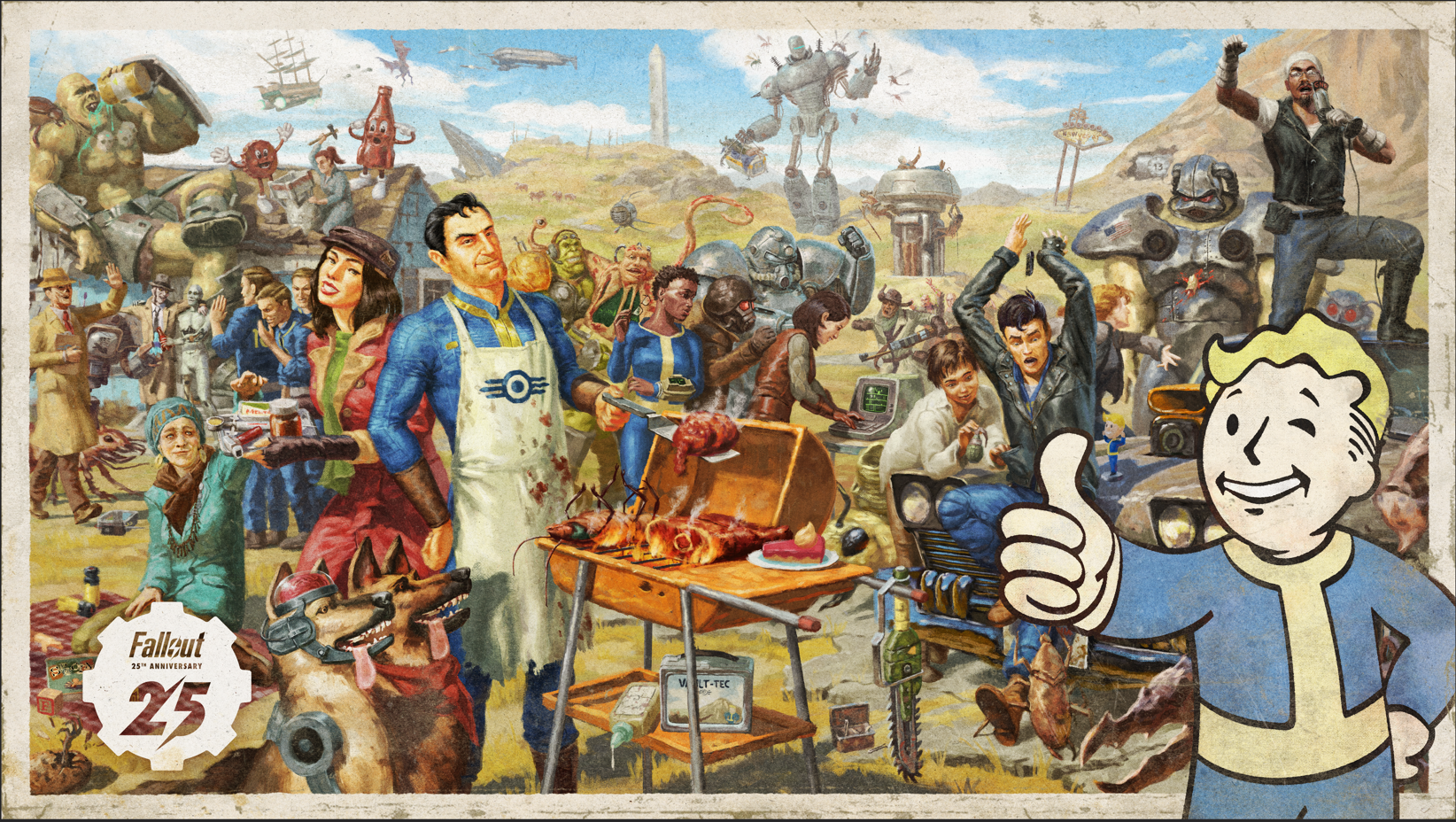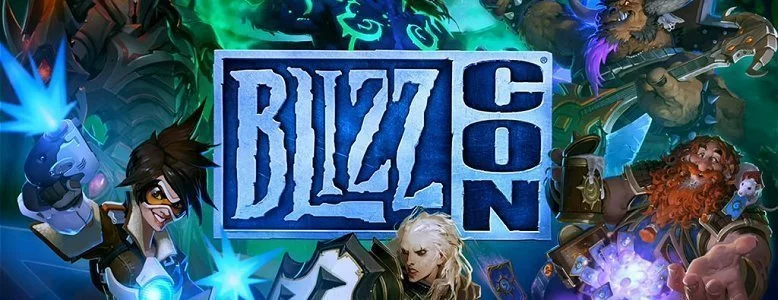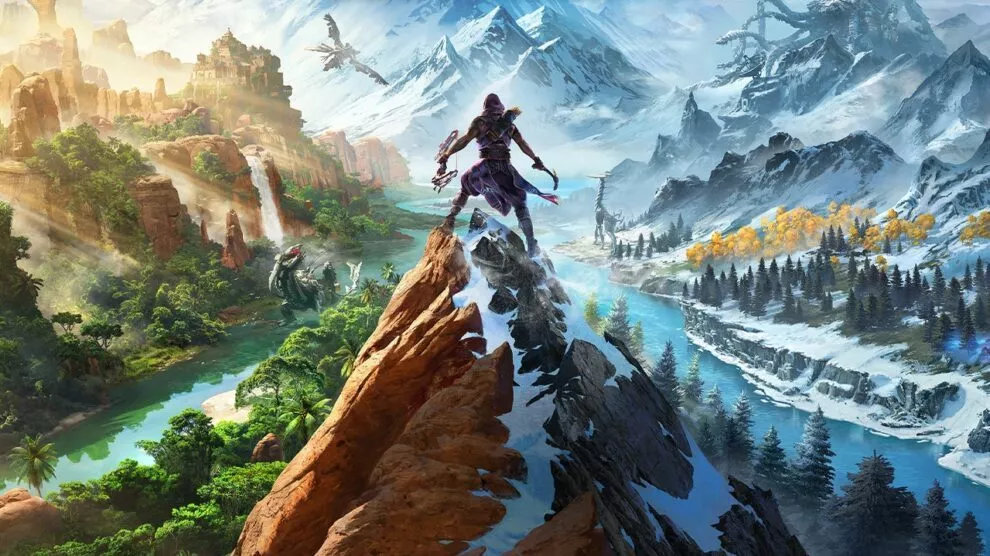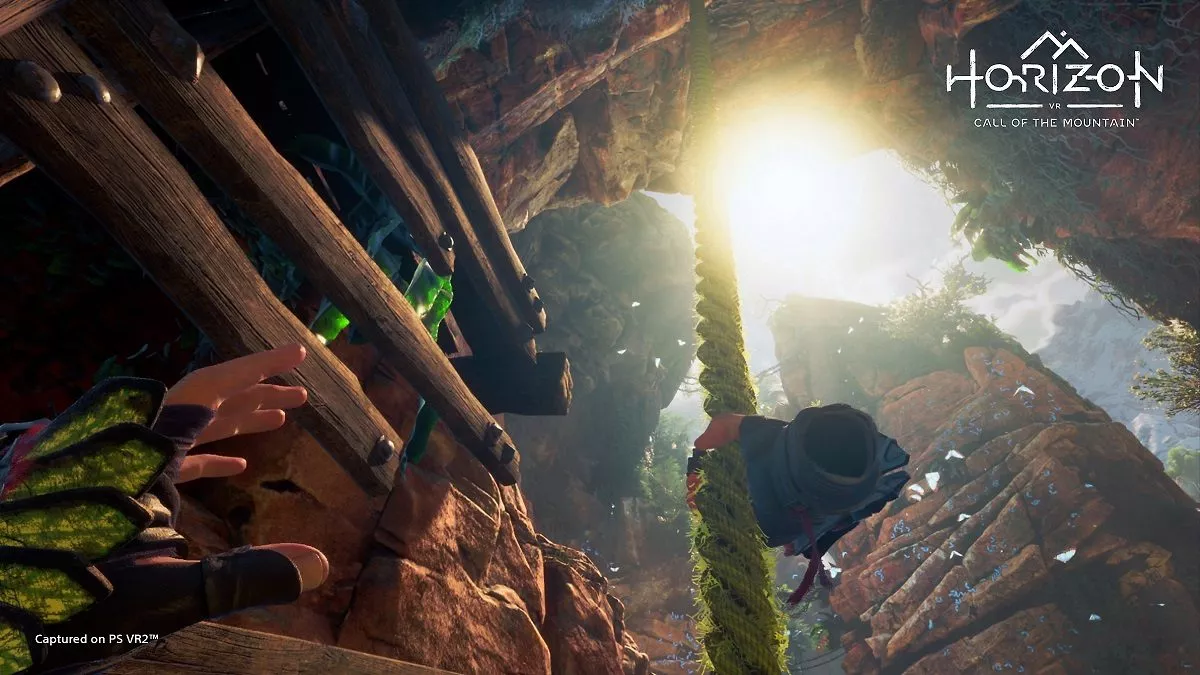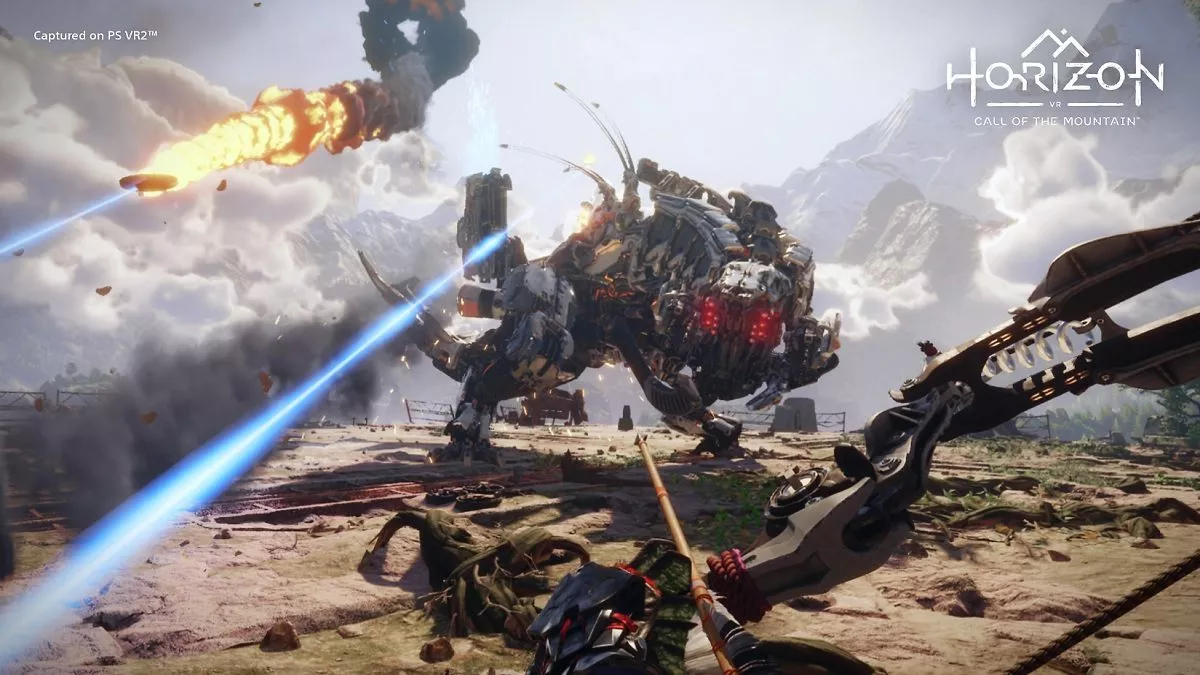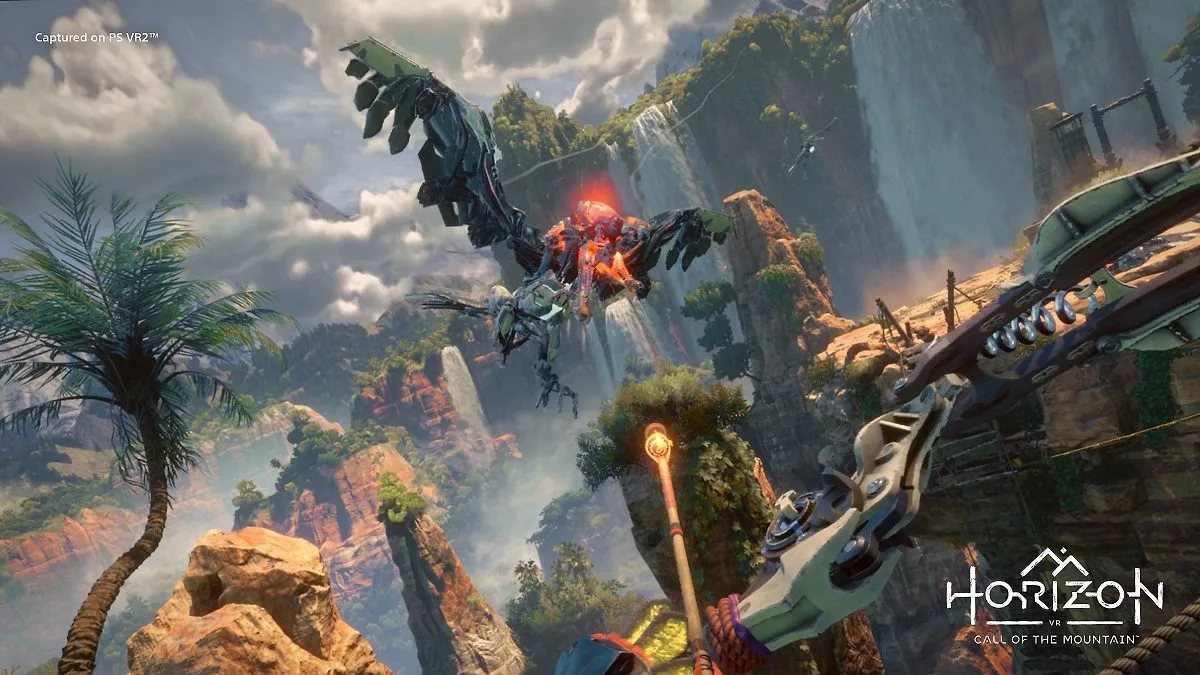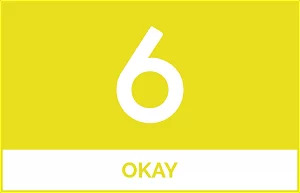But is anyone home?
A Sony franchise known for beautiful scenery and frequent use of a bow and arrow, a game set in the Horizon universe was an inevitable choice to complement the PSVR2 launch. Had Guerilla and Sony not announced it on the same day as they did the VR2, a game like Call of the Mountain would have been seen a mile away. If not Horizon, then alternatively a God of War spin-off featuring Atreus and his bow and arrow would have been the thing I’m writing about.
What wasn’t so predictable is the premium price tag that came with it, considering the exorbitant amount already being charged for the VR2 itself. Though once you’ve managed to get past that rather difficult to swallow pill, Horizon Call of the Mountain is a fun and striking way to showcase most of the PSVR2’s features. Sadly, it falls a little short of what it could have been.
Playing as Ryas, a Shadow Carga rebel imprisoned for an unspecified crime, you’re freed from prison by members of the Carja in exchange for help with a mission initially assigned to your brother, Urid. Since Urid didn’t return from his climbing expedition, you’ve become the backup plan as the only other climber capable of completing such a task… and also probably because Aloy was busy that day, having only enough time to appear in the game’s opening minutes for maybe three lines of dialogue.
Call of the Mountain is broken up into sequences of climbing merged with some some basic puzzle solving elements and standalone combat sequences against machines; the former far outweighs the latter. I’d estimate about 70% of Call of the Mountain is spent climbing up the sides of rock walls or hanging from ropes. I don’t mean to disregard the physical toll real-life rock climbing has on one’s body, but in Call of The Mountain there’s so much climbing even the imaginary motions used in PSVR2 can absolutely make the arms ache in some sections and it unfortunately gets old pretty quickly.
As you progress, climbing does start to become a little more interesting with the need for specific tools to progress such as a grappling hook, rope launcher and a pair of pickaxes to help you along the way though figuring out when and where to use these is really a no brainer and offers very little by way of challenge. Further, what is probably the coolest of the tools — the three pronged boomerang like Sunblade — is only used three times at most. Though the climbing does feel like a bit of a slog the more you do it, there are some fun sequences in which you’ll slide down ropes at speed or leap across massive gaps at great heights.
Thanks to the stereoscopic 3D of the VR2 these moments will trick your brain into thinking you’re moving and provide that funky unsteadiness that you can only get from VR. Some may feel sick during these sections, but it’s what I love about VR and it always manages to make me crack a goofy smile. Reaching the top of certain peaks and turning around to soak in the view of the beautifully crafted world is a worthy reward for all that living room arm flailing you’ve been doing. This is where Call of the Mountain earns the most praise; it’s truly breathtaking to the eyes.
Horizon has always been known for its striking visuals. The bright and lively palette, the original setting and totally believable remnants of the old world being taken over by nature all look beautiful in VR. The first-person view offers a unique opportunity to enjoy the fine details of character costumes, weapons and most of all to truly feel the scale of the massive machines that inhabit the Sundom. Even the grunt like Watchers are intimidating when you realise how much they tower over you so you can imagine the impact a Thunderjaw will have. I’ve always loved the look of the machines in the Horizon series, so being able to see them in much finer details is a joy to experience.
The few instances of puzzle solving thrown to Call of the Mountain, of which there’s probably 5 or 6 in total, are far too basic. Find a cog here, put it there to gain access to another cog, then backtrack to use both cogs elsewhere. Each of them offer as much challenge as you would expect in the first level of any puzzle game where you’re being subtly taught how the mechanics work. It’s moments like this that make Call of the Mountain feel less like the premium-priced game that it is and more like a pack-in VR showcase that it probably should have been.
Combat, on the other hand, is surprisingly good fun in most instances. Battles all take place in circular arenas in which you can only strafe around in a circle pattern; while that does feel rather limiting, the challenge and enjoyment comes into play as you target specific parts of a machine to weaken it and eliminate various attacks the same way you would in non-VR Horizon entries. This is unfortunately limited by the low number of special arrows Ryas can carry; most fights consist of you using up all your tear, shock, fire and precision arrows, along with your ice and blaze bombs from your blast sling to do as much damage as you can. When they’ve all run out, you’ll have to resort to chip away at the enemy with your unlimited supply of normal arrows until the battle is over.
Further, the fact that in previous Horizon games enemies have specific elemental weaknesses seems to have been completely forgotten in Call of the Mountain. Perhaps this is only something Aloy could be aware of thanks to her augmented reality Focus tech which Ryas doesn’t possess. The good news is the PSVR2 Sense Controllers work exceptionally well in these fighting sequences. You holding one straight out to simulate the bow, and the other to reach behind you to pull arrows from your invisible quiver and knock them; releasing the trigger on that second hand will loose the arrow, producing what feels like a real intuitive sense of precise control. Without a doubt this is helped along with some pretty clear aiming assists but is only noticeable when shooting at collectible targets outside of combat and never during battle sequences, making for some genuine satisfaction when you nail a watcher right in the lens.
Unfortunately the same can’t always be said for the climbing sequences. They’re okay for the most part, but in my playthrough there were numerous occasions where either one of Ryas’ hands would twist in an awkward direction, or while hanging on a ledge the camera would bug out sending me at least a meter above it or horizontally backwards. These events aren’t a constant annoyance but will show up at least a few times every hour or so of play and instantly take you out of the moment, once again highlighting that this isn’t the AAA game Call of the Mountain has been priced as.
This notion is also front and centre when it comes to its narrative, which is unimaginative and delivered with passable voice acting but an average script. Much like Aloy in the full Horizon games, Ryas will often talk to himself to either highlight a point of interest or blatantly describe what is happening before your eyes as if you aren’t actually seeing what’s going on. Much like the control issues mentioned above, these silly lines — seemingly spoken to you under the assumption that you don’t have eyes — immediately take you out of the moment and it’s really disappointing considering the quality of the writing found in the source material. The mountain may be calling but its writers have phoned it in.
Horizon Call of the Mountain is absolutely beautiful and features some fun moments, but it bears repeating that it in no way feels like an $80 AUD game; it barely feels like a $60 AUD game and should have been included with the PSVR2 without an additional cost. It’s without a doubt a fantastic way to show off what the PSVR2 can do (eye tracking aside as it’s only used in menus and dialogue sequences). When your friends come over to check out your new toy they’ll come to see Horizon Call of the Mountain, but they’ll stay for Gran Turismo 7. While this offers fans a literally alternate perspective into a universe that many really love (myself included) and is a fantastic as a tool to show off the PSVR2, it lacks depth as an actual game. Challenge and balance are overloaded with tedious climbing sequences and not enough of the fun stuff.
Horizon Call of the Mountain was reviewed using a retail code on PS5 and PlayStation VR2, as purchased by the publisher. Click here to learn more about Stevivor’s scoring scale.
This article may contain affiliate links, meaning we could earn a small commission if you click-through and make a purchase. Stevivor is an independent outlet and our journalism is in no way influenced by any advertiser or commercial initiative.


